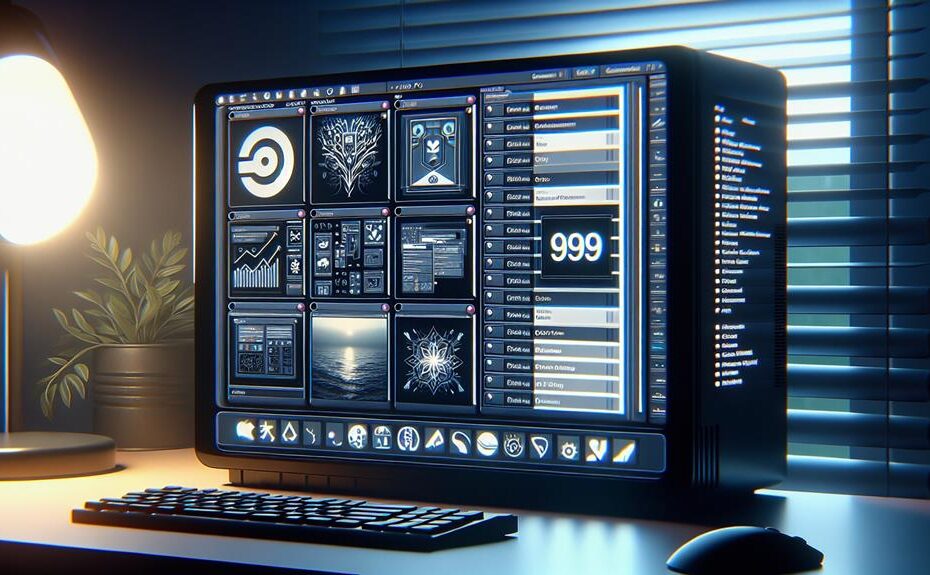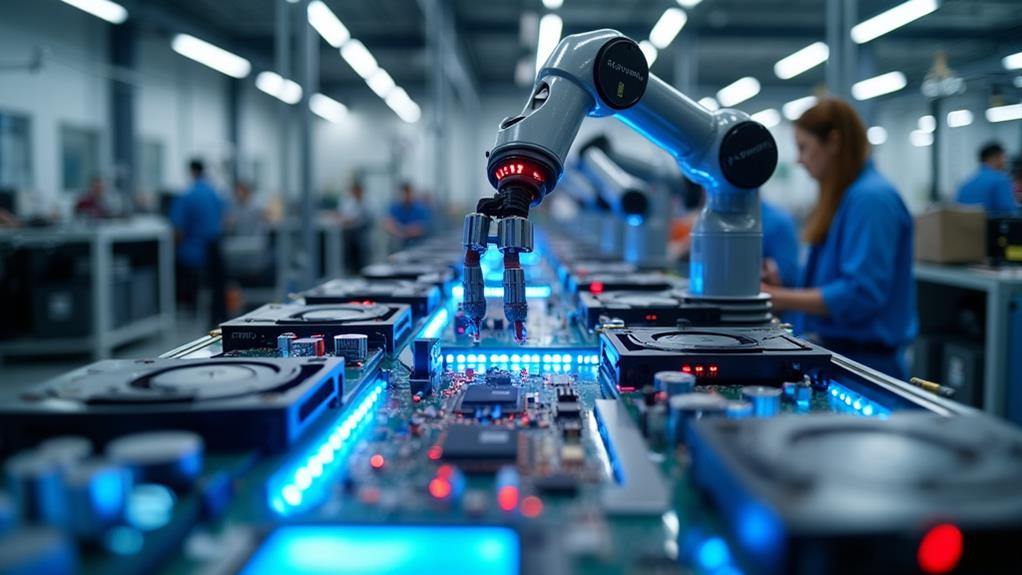



Yes, mini PCs can handle graphic design software effectively. They need the right specifications like a powerful CPU, dedicated GPU, and sufficient RAM. Optimizing software and ensuring system compatibility enhance performance. Upgradability options allow for improvements. Graphics card choice plays a significant role, considering compatibility and cooling. Benchmarking tests provide insights into capabilities. Comparing with traditional desktop setups shows advantages in portability and cost-effectiveness. Optimization tips include hardware compatibility checks, driver updates, and managing system resources efficiently. Mini PCs are viable for graphic design tasks with the correct setup. Explore more about their potential and limitations.
Key Takeaways
- Choose mini PCs with robust CPUs and dedicated GPUs for graphic design tasks.
- Ensure sufficient RAM to handle design software efficiently.
- Optimize software and system compatibility for better performance.
- Consider hardware limitations and upgrade options for peak functionality.
- Regularly update drivers and customize settings for smooth operation.
Performance Capabilities of Mini PCS
When selecting a mini PC for graphic design software, make sure it boasts high processing power and efficient multitasking capabilities. These aspects are essential to guarantee that your design applications run smoothly without any lag or delays. Hardware limitations can greatly impact the performance of graphic design software on a mini PC. Hence, it is vital to choose a device with a robust CPU, a dedicated GPU, and sufficient RAM to handle the demands of graphic design programs effectively.
Moreover, software compatibility is another important factor to take into account when picking a mini PC for graphic design. Make sure that the mini PC you choose is compatible with the specific design software you plan to use. Some programs may require higher system specifications or have specific hardware requirements. Checking that your mini PC meets these software compatibility requirements will prevent any issues or incompatibilities when running design applications. By carefully considering both hardware limitations and software compatibility, you can optimize the performance of graphic design software on your mini PC.
Minimum System Requirements for Design Software
To ensure peak performance when using graphic design software on your mini PC, it is essential to meet the minimum system requirements specified by the design software. Hardware compatibility plays a vital role in ensuring that your mini PC can handle the demands of graphic design applications. Design software often requires specific processor speeds, RAM capacity, and graphics card specifications to function at its best. Ensuring that your mini PC meets or exceeds these requirements is key to a smooth design experience.
Software optimization is another key factor to keep in mind when looking at minimum system requirements for design software. Some graphic design applications are optimized to work more efficiently with certain types of processors or operating systems. By aligning your mini PC with the software’s recommended operating environment, you can enhance its performance and minimize potential compatibility issues.
Factors Influencing Graphic Design Software Performance
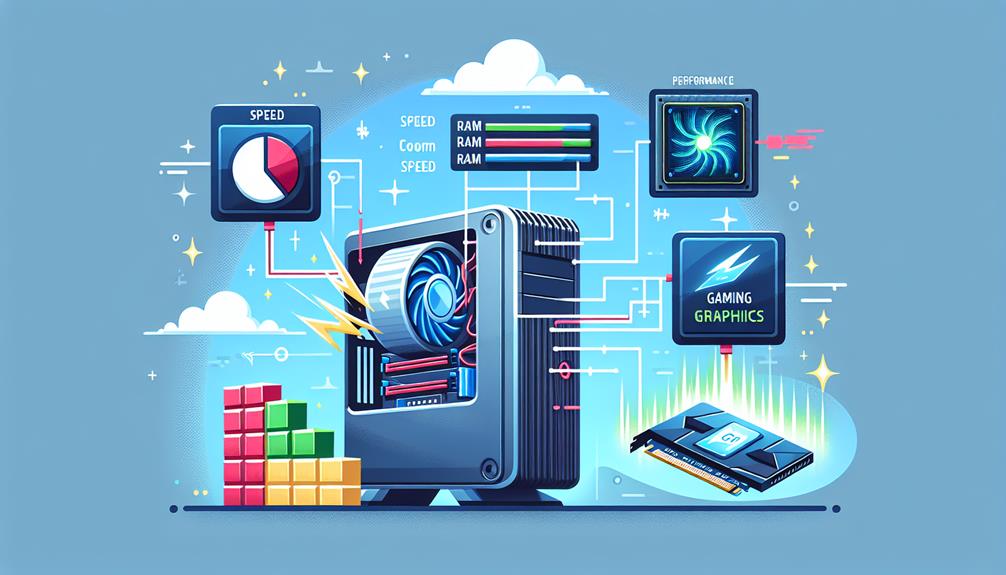
Factors that greatly impact the performance of graphic design software on your mini PC include hardware specifications, software optimization, and system compatibility. Hardware compatibility is important for running graphic design software smoothly. Your mini PC needs a powerful processor, an adequate amount of RAM, and a dedicated graphics card to handle demanding design applications effectively. Verifying that your mini PC meets the recommended hardware requirements will notably enhance the software’s performance.
Software optimizations play a critical role in how efficiently graphic design programs run on your mini PC. Developers often release updates and patches to optimize their software, improving speed and stability. It is crucial to keep your design software up to date to benefit from these optimizations.
System compatibility is another key factor influencing graphic design software performance. Some programs may perform better on specific operating systems or configurations. Checking the software’s compatibility with your mini PC’s operating system and components can help maximize performance. By paying attention to hardware specifications, software optimizations, and system compatibility, you can ensure that your mini PC effectively handles graphic design software.
Upgradability Options for Mini PCS
To optimize your mini PC’s performance for graphic design software, exploring the upgradability options can provide you with enhanced capabilities and longevity. When contemplating upgradability options, customization plays an essential role. Mini PCs often offer the flexibility to upgrade components such as RAM, storage, and even the processor, allowing you to tailor the system to meet the demands of graphic design software.
Cooling solutions are another vital aspect to ponder when thinking about upgradability. As you enhance your mini PC’s performance through upgrades, ensuring efficient cooling becomes crucial to maintain peak functioning and prevent overheating. Some mini PCs may offer options for aftermarket cooling solutions to better manage heat dissipation.
Moreover, upgradability can also impact portability. While mini PCs are known for their compact size and ease of transport, modifications made for upgradability might affect the overall size and weight of the system. Hence, when customizing your mini PC for graphic design tasks, balancing performance upgrades with maintaining portability is key to creating a versatile and powerful workstation.
Benchmark Tests for Graphic Design Tasks
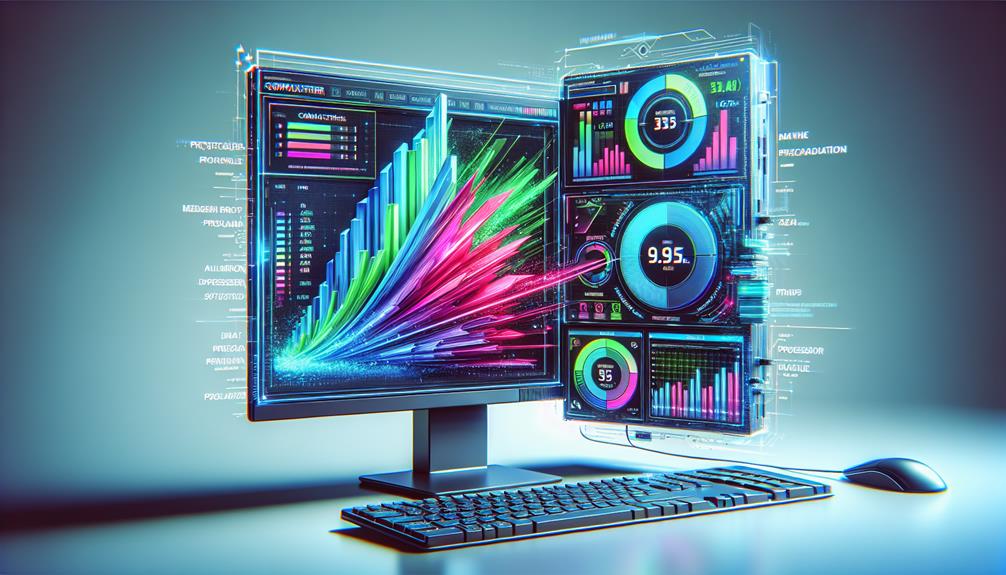
When evaluating the performance of your mini PC for graphic design tasks, conducting benchmark tests is essential for gauging its capabilities accurately. To assess its suitability for graphic design software, consider running benchmarks that examine software compatibility and user experience. Check how efficiently the mini PC handles resource consumption during graphic design tasks. This includes analyzing its ability to manage memory-intensive processes and rendering tasks without significant lag. Evaluate multitasking efficiency by running tests that simulate real-world graphic design scenarios, such as working with multiple design software simultaneously. By conducting these benchmark tests, you can gain insights into the mini PC’s performance capabilities and its ability to meet the demands of graphic design tasks. Remember, the results of these tests will provide you with valuable information to determine if your mini PC is up to the challenge of handling graphic design software effectively.
Potential Limitations of Mini PCS
Considerations for Mini PCs in Graphic Design Work include size limitations and portability advantages. While mini PCs offer the benefit of being compact and easy to move around, their smaller size can also pose restrictions. Due to their compact form factor, mini PCs may have fewer upgrade options compared to larger desktop counterparts. This means that you may be limited when it comes to adding more storage or upgrading components like the graphics card.
Another potential restriction to be mindful of is the cooling solutions and thermal management techniques employed in mini PCs. With their small size, mini PCs can struggle with heat dissipation, especially when running graphic design software that puts a heavy load on the system. Inadequate cooling can lead to thermal throttling, where the processor reduces its performance to prevent overheating, impacting your workflow.
Therefore, when considering a mini PC for graphic design work, it’s important to assess these restrictions and make sure that the chosen system meets your specific requirements while offering the portability advantages you seek.
Graphics Card Considerations for Design Work
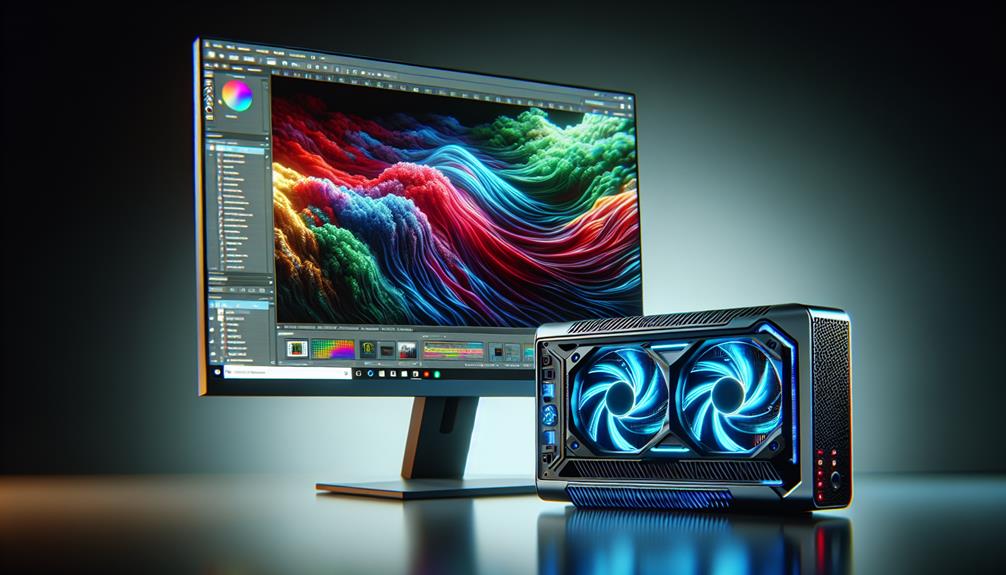
Given the compact nature of mini PCs and their potential limitations on upgrading components like storage and cooling systems, the choice of graphics card becomes a critical factor in optimizing performance for graphic design work. When selecting a graphics card for your mini PC, it’s imperative to take into account factors such as graphics card compatibility, cooling solutions, power supply requirements, and portability.
Graphics card compatibility is paramount, as not all graphics cards may fit or be supported by mini PCs due to size constraints. Additionally, ensuring proper cooling is vital to prevent overheating in the confined space of a mini PC. You must also check the power supply requirements of the graphics card to make sure your mini PC can support it without issues.
Moreover, portability should not be overlooked. A powerful graphics card that adds significant weight or size to your mini PC may impact its portability, which is a key advantage of mini PCs. Balancing these considerations will help you choose a graphics card that maximizes performance without compromising the compact design and portability of your mini PC.
Comparison With Traditional Desktop Setups
To assess the efficiency of mini PCs for graphic design software, comparing them with traditional desktop setups provides valuable insights into their respective advantages and limitations. When looking at portability benefits, mini PCs shine due to their compact size and lightweight design, allowing you to work from various locations with ease. In contrast, traditional desktop setups are bulkier and less convenient to move around, limiting your flexibility in where you can work efficiently.
Moving on to cost comparisons, mini PCs often come at a lower price point compared to traditional desktop setups. This cost-effectiveness can be appealing, especially for beginners or freelancers looking to invest in a capable system without breaking the bank. On the other hand, traditional desktop setups can offer more customization options and potentially higher performance, but this usually comes at a higher cost.
Considering these factors, if portability and cost-efficiency are essential to you, a mini PC might be the ideal choice for your graphic design needs.
Tips for Optimizing Mini PCS for Design Tasks
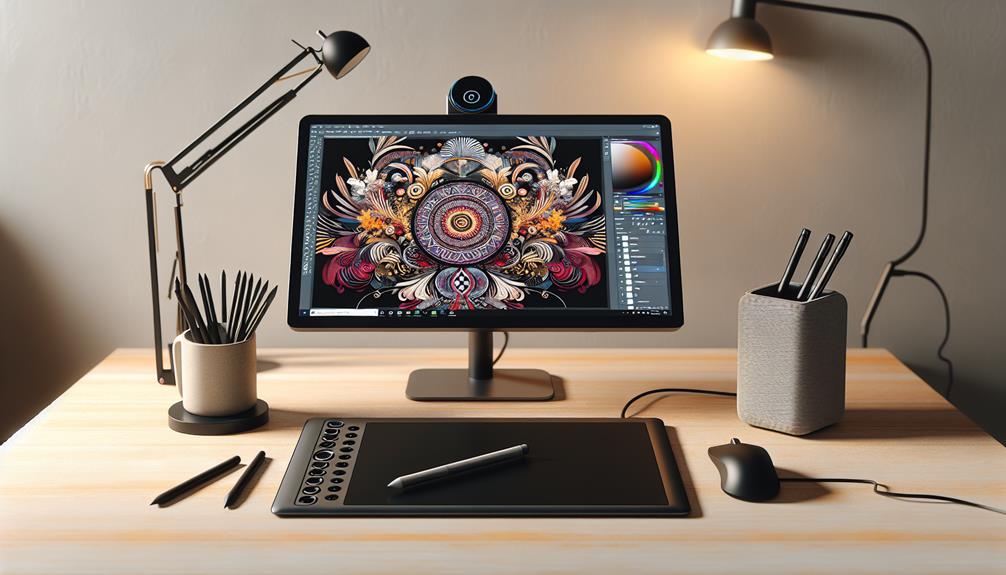
When fine-tuning mini PCs for design tasks, maximizing system performance and efficiency is crucial to enhancing your graphic design workflow. To enhance your mini PC for design tasks, start by ensuring hardware compatibility with the software you use. Check graphic card specifications and processor capabilities to meet the requirements of your design applications. Updating drivers regularly can also improve performance. Consider investing in additional RAM to handle large design files smoothly. Managing software and background applications can free up system resources and improve overall speed. Utilize external storage options to prevent cluttering your mini PC’s storage, which can impact performance. Customizing power settings to prioritize performance over energy saving can also enhance your design tasks. Regularly maintain your mini PC by cleaning out dust and ensuring proper ventilation for optimal functioning. By following these tips and paying attention to hardware compatibility, you can fine-tune your mini PC for efficient graphic design tasks.
Disclosure: As an Amazon Associate, I earn from qualifying purchases.
